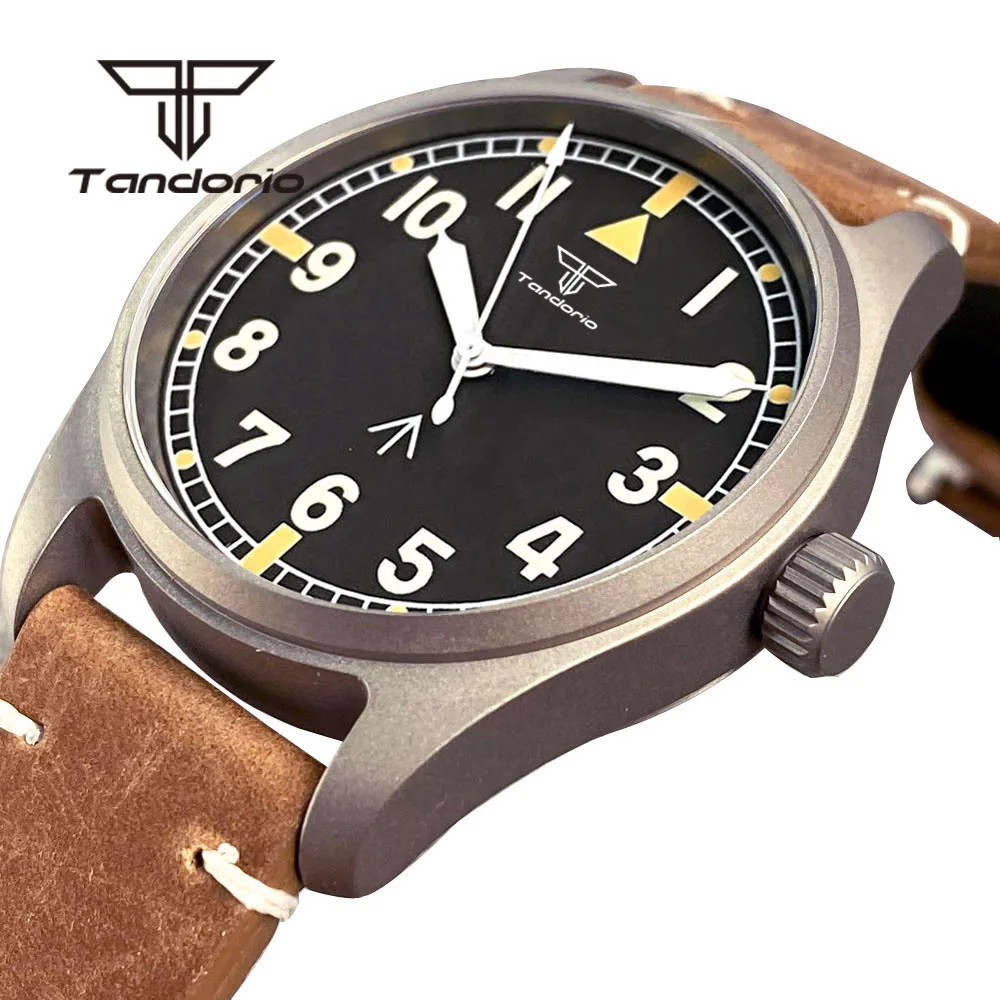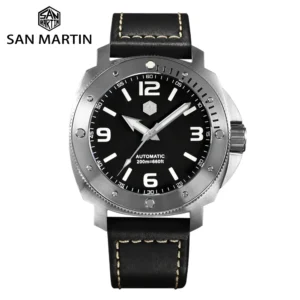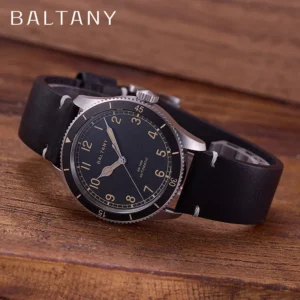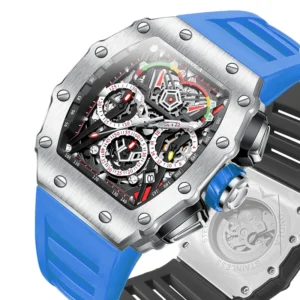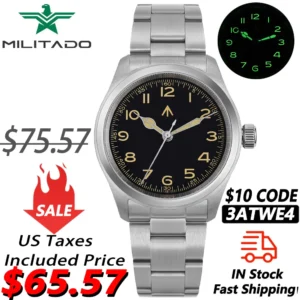Introduction: The Importance of Material Selection for Watch Cases
The material of your watch case isn’t just about aesthetics—it fundamentally determines how your timepiece performs, how long it lasts, and how comfortable it feels on your wrist. Among premium watch materials, titanium has gained remarkable popularity for its unique combination of properties, especially its exceptional thermal characteristics.
Heat resistance may not be the first feature you consider when purchasing a watch, but it significantly impacts both the longevity of your timepiece and your daily wearing comfort. Whether you’re navigating freezing winter temperatures or enduring sweltering summer heat, your watch’s case material interacts constantly with your body temperature and the environment.
Not all watch case materials respond equally to temperature changes. Some metals quickly become uncomfortably cold in winter or unpleasantly hot during summer. Others maintain more consistent temperatures, adapting seamlessly to environmental conditions while protecting the delicate mechanical components within.
Understanding these thermal properties becomes particularly important when considering the history of dive watch engineering, where materials have evolved to meet increasingly demanding conditions.
Key takeaways:
– Material selection affects watch performance, durability, and wearer comfort
– Titanium offers exceptional thermal properties compared to traditional materials
– Temperature variations can impact both short-term comfort and long-term durability
– The right case material creates a more pleasant wearing experience across seasons
What Makes a Watch Case “Heat Resistant”?
When we discuss “heat resistance” in watch cases, we’re referring to several specific thermal properties that determine how a material performs across temperature ranges.
High-temperature tolerance: This refers to how well a material maintains its structural integrity when exposed to heat. A truly heat-resistant material will have a high melting point and retain its strength and form even when subjected to elevated temperatures.
Thermal conductivity: This measures how efficiently a material transfers heat. Materials with low thermal conductivity don’t readily absorb or release heat, which translates to more stable temperatures against your skin.
Thermal expansion: This property describes how much a material changes in size and shape when heated. Watch case materials with low thermal expansion coefficients maintain more consistent dimensions across temperature ranges, which is crucial for maintaining water resistance and protecting internal components.
These properties matter not just in extreme scenarios like diving in tropical waters or hiking in freezing conditions, but also in everyday situations like moving from air-conditioned buildings to hot summer streets. The evolution of dive watch technology demonstrates how these thermal considerations have become increasingly important in modern timepiece design.
Understanding these basic principles provides the foundation for appreciating titanium’s exceptional thermal performance in watch cases.
The Science Behind Titanium’s Thermal Properties
At the atomic level, titanium’s unique structure gives it remarkable thermal properties that make it ideal for watch cases. As a transition metal, titanium has an incomplete d-subshell in its electronic configuration, which contributes to its exceptional strength-to-weight ratio and thermal behavior.
Titanium boasts an impressive melting point of approximately 3,034°F (1,668°C), significantly higher than stainless steel’s melting point of around 2,500-2,790°F (1,370-1,500°C). This extremely high melting point means titanium watch cases maintain their integrity even in conditions that would compromise other materials.
One of titanium’s most beneficial properties for watchmaking is its remarkably low thermal conductivity (approximately 22 W/m·K), much lower than many other metals used in watch cases. This means heat travels through titanium more slowly, creating a more temperature-stable environment for both the watch mechanism and the wearer’s wrist.
When exposed to oxygen, titanium spontaneously forms a thin, stable oxide layer (TiO₂) on its surface. This natural coating not only protects against corrosion but also enhances the material’s heat resistance by creating a barrier against thermal transfer and further oxidation at high temperatures.
The reasons titanium is used in watches extend well beyond its thermal properties, but these heat-resistant characteristics play a crucial role in its growing popularity among premium watchmakers.
Key thermal properties:
– Extremely high melting point (3,034°F/1,668°C)
– Low thermal conductivity compared to other watch metals
– Natural oxide layer that enhances heat resistance
– Excellent dimensional stability across temperature ranges
Low Thermal Conductivity: The Secret Behind Titanium’s Wearing Comfort
Perhaps the most immediately noticeable benefit of titanium’s thermal properties is how comfortable it feels against your skin. This comfort stems primarily from titanium’s low thermal conductivity—a material’s ability to transfer heat.
When you put on a watch made from a highly conductive material like stainless steel in cold weather, it immediately draws heat away from your skin, creating that shocking “cold” sensation. Conversely, in hot conditions, these materials quickly absorb heat from the environment, becoming uncomfortably warm against your wrist.
Titanium, however, behaves differently. When you first put on a titanium watch in cold conditions, it doesn’t rapidly pull heat from your skin, avoiding that unpleasant cold shock. The material warms up gradually and maintains a more neutral temperature, quickly reaching equilibrium with your body temperature.
This slow heat transfer works both ways. On hot summer days, titanium resists absorbing environmental heat, maintaining a more comfortable temperature against your skin without becoming uncomfortably hot. For active wearers, this means less clammy or sweaty feeling under the watch during physical activities.
This thermal neutrality creates what many enthusiasts describe as the perfect wearing experience. As outlined in our titanium watches ultimate guide, these thermal properties contribute significantly to why many wearers describe titanium watches as feeling like they “disappear” on the wrist, especially during extended wear.
The practical result is a watch that remains comfortable throughout seasonal temperature changes and during transitions between indoor and outdoor environments—a subtle but meaningful improvement in the daily wearing experience.
Titanium vs. Stainless Steel: A Comprehensive Thermal Comparison
When comparing titanium and stainless steel—the two most popular materials for quality watch cases—their thermal differences become immediately apparent in both technical specifications and real-world performance.
| Property | Titanium | Stainless Steel |
|---|---|---|
| Melting Point | 3,034°F (1,668°C) | 2,500-2,790°F (1,370-1,500°C) |
| Thermal Conductivity | 22 W/m·K | 16-24 W/m·K (depending on alloy) |
| Heat Absorption Rate | Slow | Rapid |
| Temperature Adaptation | Gradual, comfortable | Quick, more noticeable |
| Thermal Comfort | More neutral feeling | More pronounced temperature sensation |
Titanium’s higher melting point means it maintains structural integrity at temperatures that might compromise stainless steel. This becomes particularly important in extreme environmental conditions where material stability is crucial.
In terms of daily wear, titanium’s thermal properties create a noticeably different experience. While stainless steel quickly adopts environmental temperatures—feeling distinctly cold in winter and potentially uncomfortably warm in summer—titanium maintains a more neutral temperature against the skin.
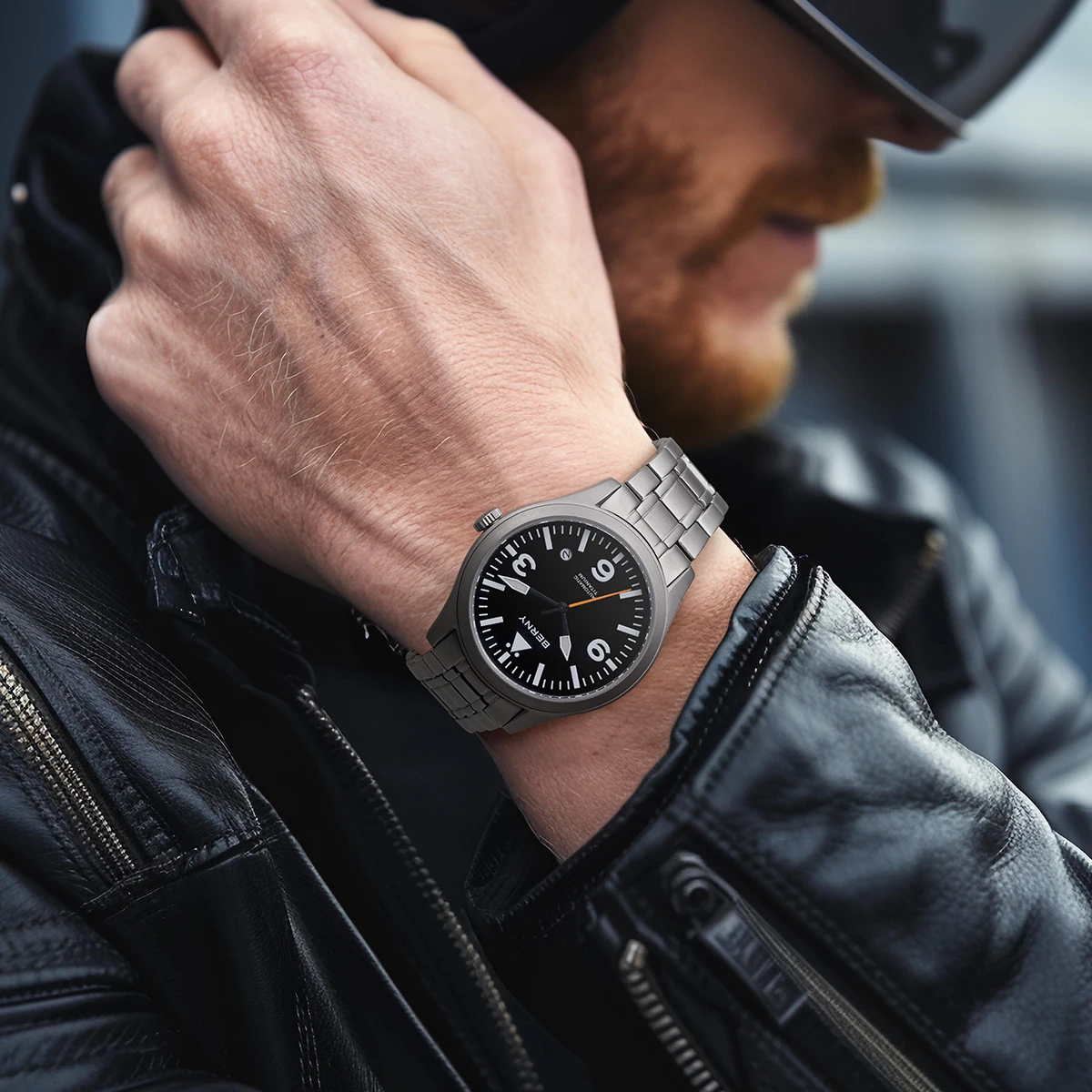
For those who wear their watches in diverse environments, titanium’s thermal stability translates to more consistent comfort. Whether you’re moving from an air-conditioned office to a hot parking lot or from a warm home to winter conditions, a titanium watch adapts more gradually to temperature changes.
The pros and cons of titanium watches extend beyond thermal properties, but this temperature neutrality represents one of the material’s most appreciated advantages for daily wear.
Real-World Benefits: What Titanium’s Heat Properties Mean for Watch Wearers
Titanium’s unique thermal properties translate into tangible benefits for watch enthusiasts in various real-world scenarios:
Enhanced year-round comfort: Regardless of season, titanium watches maintain a more consistent temperature against your skin. In winter, they don’t produce that uncomfortable cold shock when first putting on your watch. In summer, they resist absorbing excessive heat, preventing that clammy feeling under your watch during hot, humid days.
Reduced temperature shock: When moving between environments with significant temperature differences (like air-conditioned buildings and hot summer streets), titanium adapts more gradually, providing a more comfortable transition.
Athletic performance advantages: For active wearers, titanium’s thermal properties help maintain comfort during exercise when body temperature rises. The watch case won’t feel increasingly hot against sweaty skin, unlike more conductive materials.
Extreme condition reliability: Adventure enthusiasts appreciate titanium’s thermal stability in extreme environments. Whether facing desert heat or arctic cold, titanium maintains its structural integrity and comfortable wear. This reliability factor becomes particularly important when considering how long automatic watches last under challenging conditions.
Sleeping comfort: For those who wear watches 24/7, titanium’s thermal neutrality makes it more comfortable during sleep, when the body undergoes natural temperature fluctuations.
These benefits aren’t merely theoretical—they represent meaningful improvements in the daily wearing experience that many enthusiasts cite when explaining their preference for titanium automatic watches.
Different Titanium Grades and Their Thermal Performance
Not all titanium watch cases are created equal. The grade of titanium used significantly impacts its thermal performance and overall properties. Here are the most common grades used in watchmaking:
Grade 2 Titanium (Commercially Pure): This is pure titanium with minimal alloying elements. It offers excellent corrosion resistance and good thermal properties, including low conductivity. Grade 2 provides a good balance between manufacturing practicality and performance. Its thermal conductivity typically measures around 22 W/m·K.
Grade 5 Titanium (Ti-6Al-4V): This aerospace-grade titanium alloy contains 6% aluminum and 4% vanadium. Grade 5 offers superior strength compared to pure titanium while maintaining excellent heat resistance. The addition of aluminum slightly reduces thermal conductivity, potentially enhancing wearing comfort. Its thermal conductivity measures approximately 6.7 W/m·K.
The alloying elements in different titanium grades affect not only strength and weight but also thermal behavior. Aluminum, in particular, reduces thermal conductivity, which can enhance the material’s temperature-stable properties against the skin.
Most luxury watch manufacturers opt for either Grade 2 or Grade 5 titanium, with the choice often reflecting a balance between manufacturing considerations, desired aesthetics, and performance characteristics. Grade 5 is typically more expensive and harder to machine but offers enhanced durability and slightly better thermal properties.
For the average wearer, the difference in thermal performance between titanium grades may be subtle, but dedicated enthusiasts often report noticing distinctions in how different titanium formulations feel during extended wear, particularly in variable temperatures.
Common Questions About Titanium and Heat
Can titanium watches be damaged by heat in normal conditions?
No, titanium watches won’t suffer damage under normal temperature conditions. With a melting point of over 3,000°F (1,668°C), titanium easily withstands any temperatures you’d encounter in daily life, including hot showers, saunas, and car interiors on hot summer days.
Does titanium’s heat resistance make it stay cooler in direct sunlight?
Yes, titanium’s low thermal conductivity means it absorbs heat more slowly than materials like stainless steel. A titanium watch left in direct sunlight will take longer to heat up and won’t reach the same high temperatures as more conductive metals.
Are there any disadvantages to titanium’s thermal properties?
The same low conductivity that makes titanium comfortable in heat can make it feel slightly less warm in extremely cold conditions compared to more conductive metals that quickly absorb body heat. However, most wearers consider titanium’s overall thermal neutrality a significant advantage.
How does titanium perform in extreme cold?
Titanium maintains its structural properties in extreme cold without becoming brittle. Its low thermal conductivity means it won’t feel as intensely cold against the skin as stainless steel when first putting it on in freezing conditions. This makes titanium ideal for professional spec dive watches used in variable conditions.
Does titanium’s thermal property degrade over time?
No, titanium’s thermal properties remain stable throughout the life of the watch. The protective oxide layer that forms on titanium actually improves over time, potentially enhancing its heat resistance and corrosion protection.
Beyond Heat: Other Temperature-Related Benefits of Titanium
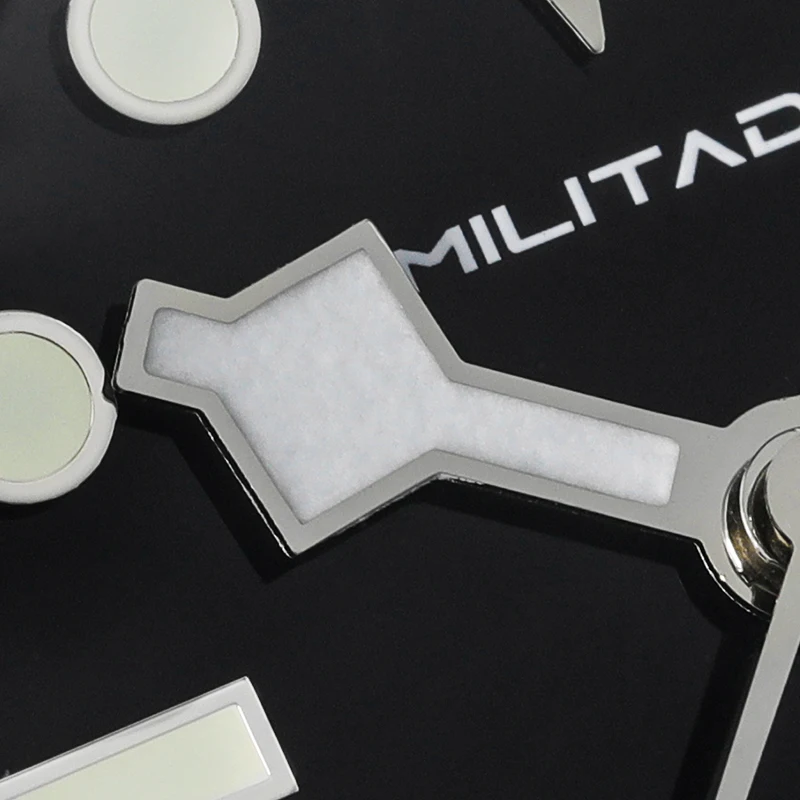
Titanium’s exceptional heat resistance represents just one aspect of its temperature-related advantages for watch cases. Several complementary properties enhance its performance across diverse conditions:
Superior corrosion resistance in high temperatures: Unlike many metals that become more susceptible to corrosion as temperatures rise, titanium’s natural oxide layer actually strengthens in higher temperatures. This makes titanium watches particularly well-suited for hot, humid environments where sweat and moisture might accelerate corrosion in other materials.
Exceptional oxidation resistance: Even when subjected to elevated temperatures, titanium resists oxidation remarkably well. This stability means the material maintains its appearance and structural integrity without degrading over time, regardless of environmental exposure.
Military Inspired Automatic Watches, Rugged Automatic Watches, Tactical Automatic Watches
Price range: $852.14 through $994.60 Select options This product has multiple variants. The options may be chosen on the product pageBronze Automatic Watches, Military Inspired Automatic Watches, Professional Spec Dive Watches
Price range: $1,442.21 through $1,442.82 Select options This product has multiple variants. The options may be chosen on the product pageProfessional Spec Dive Watches, Titanium Automatic Watches
$574.74 Select options This product has multiple variants. The options may be chosen on the product pageClassic Pilot Watches, Military Inspired Automatic Watches
$561.00 Select options This product has multiple variants. The options may be chosen on the product pageRugged Automatic Watches, Unique Automatic Watches
Price range: $228.96 through $231.10 Select options This product has multiple variants. The options may be chosen on the product pageClassic Field Watches, Military Inspired Automatic Watches
Price range: $280.87 through $338.51 Select options This product has multiple variants. The options may be chosen on the product page
Minimal thermal expansion: Titanium exhibits very low thermal expansion compared to many other watch case materials. This means the case dimensions remain more consistent across temperature ranges—a crucial factor for maintaining water resistance seals and protecting internal components from environmental stress. This property is especially valuable for tough watch cases designed for extreme conditions.
Temperature stability for movement protection: A watch case that maintains stable temperatures provides better protection for the sensitive mechanical movement inside. Titanium’s insulating properties help buffer the delicate mechanism from rapid temperature changes that can affect timing precision and lubricant viscosity.
These complementary properties work together to enhance the overall durability and performance of titanium watches, particularly in challenging environments or for users who subject their timepieces to variable conditions.
The Premium Experience: Why Luxury Watchmakers Choose Titanium
Despite the higher costs and manufacturing challenges associated with titanium, luxury watchmakers increasingly choose this material for their high-end timepieces. This trend reflects titanium’s ability to deliver a truly premium wearing experience.
Luxury watchmaking is ultimately about exceptional engineering meeting superior comfort, and titanium’s thermal properties contribute significantly to this equation. The material’s temperature neutrality creates what many enthusiasts describe as the “perfect wearing experience”—the sensation that the watch becomes one with the wrist rather than sitting as a distinct object on it.
Beyond pure comfort, titanium’s thermal properties also symbolize thoughtful engineering. When a manufacturer selects titanium for its thermal advantages, they demonstrate attention to how the watch will perform in real-world conditions, not just how it looks in a display case. This commitment to performance aligns perfectly with the ethos of rugged automatic watches designed for active lifestyles.
For discerning watch collectors, these thermal properties represent part of the comprehensive quality that justifies premium pricing. While not always explicitly marketed, the temperature-stable comfort of titanium becomes immediately apparent during extended wear, creating the kind of subtle satisfaction that defines luxury goods.
The growing adoption of titanium among prestigious watch brands signals an important shift in how manufacturers and consumers alike define premium quality—moving beyond mere aesthetics toward materials that enhance the overall ownership experience through technical performance.
Conclusion: Is Titanium’s Heat Resistance Worth the Premium?
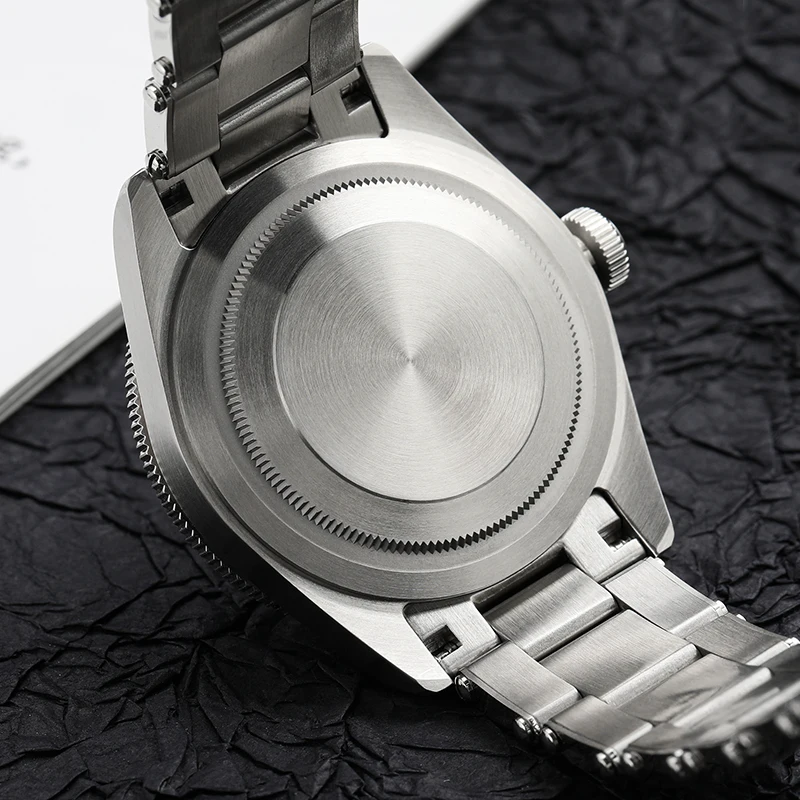
After examining titanium’s remarkable thermal properties, the question remains: does titanium’s heat resistance justify its premium price point for watch cases?
For those who prioritize wearing comfort across diverse environments, titanium’s thermal advantages offer genuine, tangible benefits. The material’s ability to maintain a neutral temperature against the skin—avoiding both the cold shock of winter and the clammy heat of summer—creates a noticeably superior wearing experience that many enthusiasts consider well worth the investment.
Active individuals and those who wear their watches in variable conditions will likely appreciate titanium’s benefits most acutely. The thermal stability provides particular advantages for automatic field and military watches designed for outdoor use across seasons.
For everyday wearers, titanium’s heat resistance combines with its lightweight nature and hypoallergenic properties to create an overall package that significantly enhances the daily experience of wearing a fine timepiece. This comprehensive performance improvement, rather than any single property, justifies titanium’s position as a premium watch case material.
Ultimately, whether titanium’s heat resistance justifies its premium depends on your personal priorities. If wearing comfort, material performance, and long-term durability rank highly in your considerations, titanium’s exceptional thermal properties make it a compelling choice that will reward you with years of superior comfort and performance.

